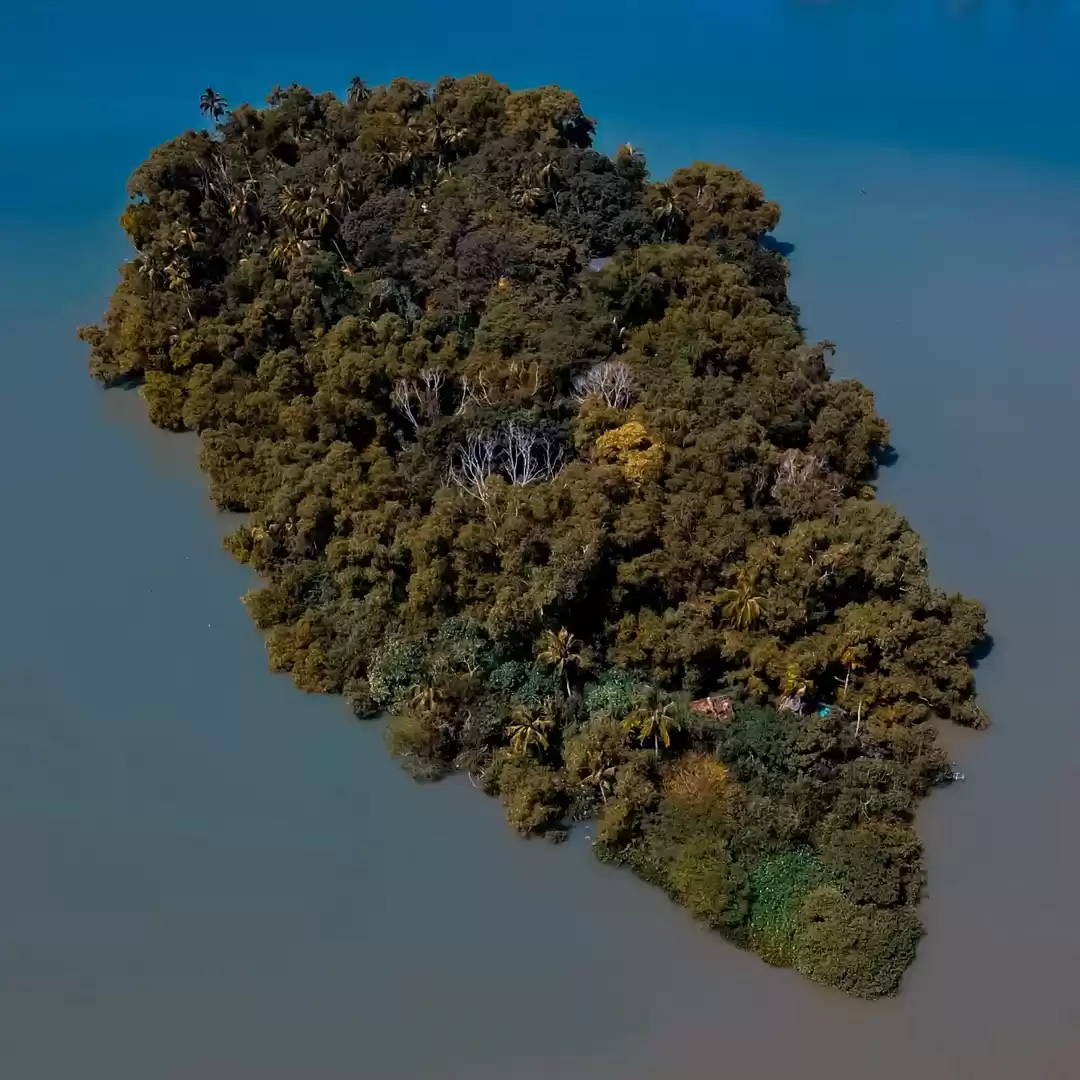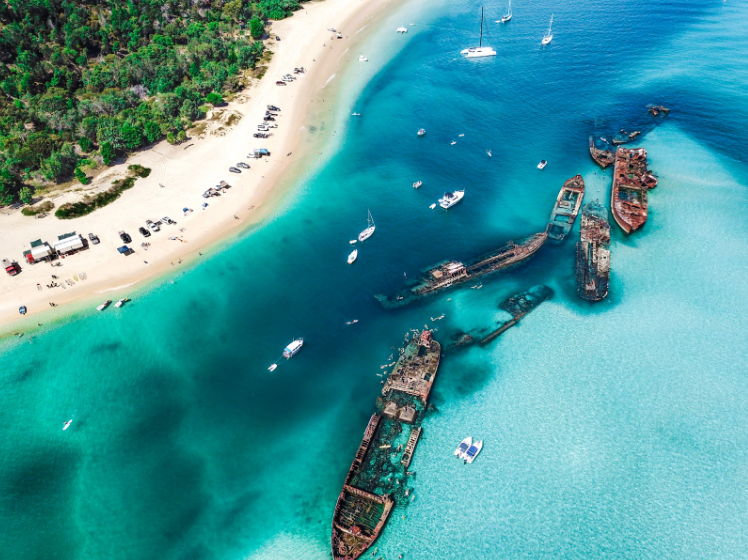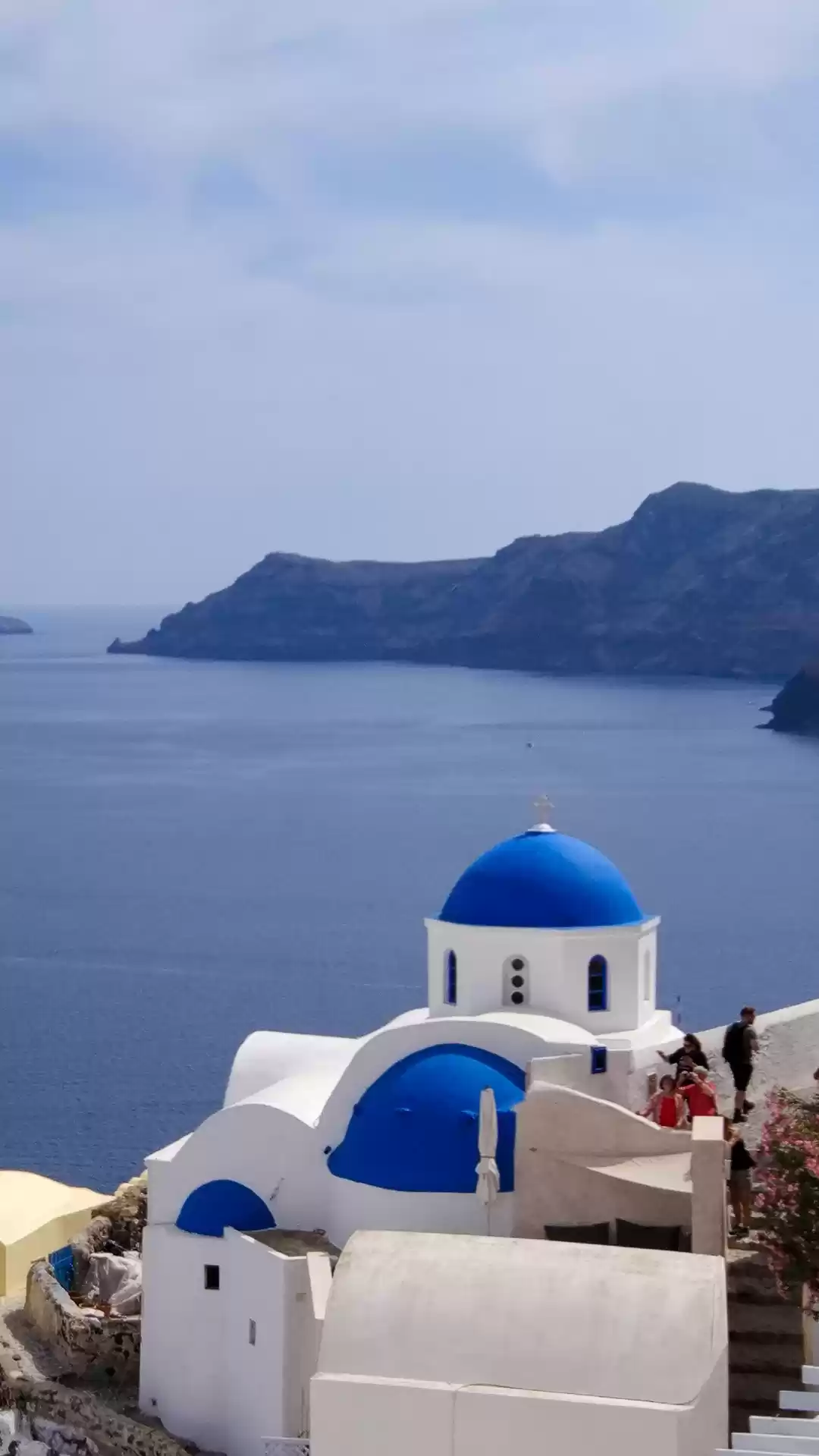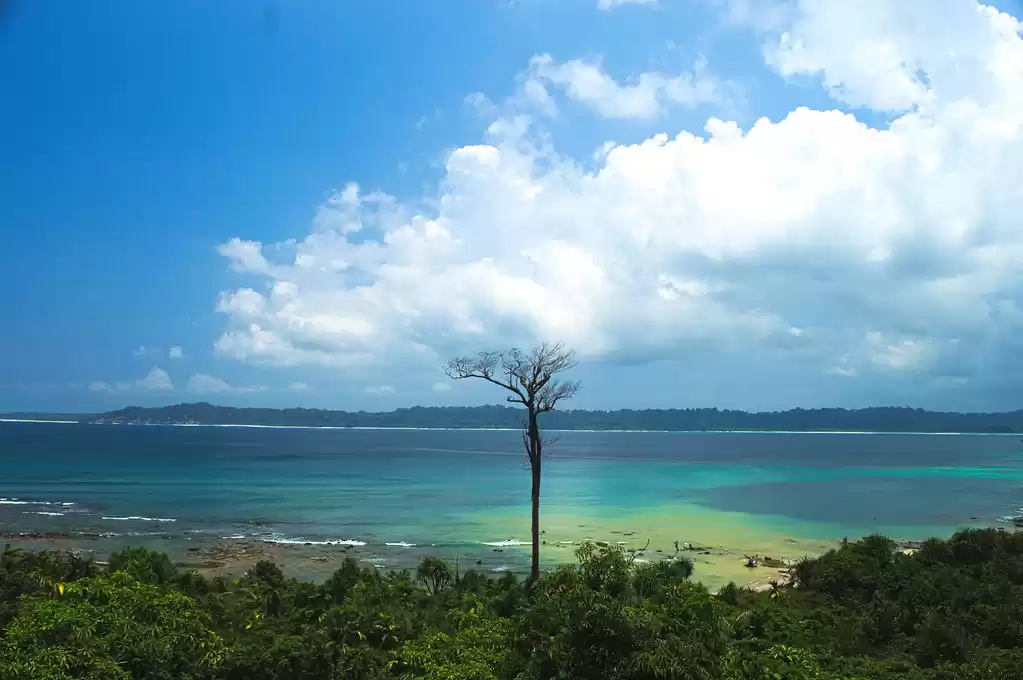Have you ever dreamed of witnessing a live volcano in action? Do you want to explore one of the most remote and pristine islands in the world? If yes, then you should definitely visit Barren Island, the only active volcano in India, located in the Andaman & Nicobar Islands. Barren Island is a hidden gem that offers a rare and thrilling experience for adventurous travelers, who can enjoy the spectacular views of the volcanic cone, the unspoiled beauty of the island, and the rich marine life that surrounds it.
In this article, we will tell you everything you need to know about Barren Island, and how to plan a memorable trip to this unique destination. We will cover the history, geography, wildlife, attractions, and experiences of the island, as well as the best time, permit requirements, transportation options, accommodation, food, and facilities on the island.
We will also share with you some important safety measures, precautions, packing essentials, and dos and don’ts of visiting the island. By the end of this article, you will be ready to book your trip to Barren Island with Tripoto, the best and most trusted travel company in India. So, let’s get started!
What is Barren Island and Why is it Special?
The History and Geography of Barren Island
Barren Island is a small volcanic island, measuring about 3 km in diameter, located in the Andaman Sea, about 135 km northeast of Port Blair, the capital of Andaman & Nicobar Islands. It is the only confirmed active volcano in South Asia, and one of the few in the world that lies in the sea. The island is part of the Indian Union Territory of Andaman & Nicobar Islands, and is administered by the Andaman & Nicobar Administration.
The island was formed by volcanic eruptions that occurred over millions of years, and is composed of basaltic lava flows, ash deposits, and pyroclastic materials. The island has a central crater, which is about 2 km in diameter and 250 m deep, and is surrounded by a steep and rocky coastline. The highest point of the island is about 354 m above sea level, and is located on the southern rim of the crater. The island has no permanent human population, and is uninhabited except for some wildlife and occasional visitors.

The island has been erupting intermittently since 1787, when it was first recorded by a British naval officer. The most recent eruption occurred in February 2021, when the island spewed lava and ash into the air, creating a spectacular sight for the nearby vessels and aircrafts. The island is classified as a stratovolcano, which means that it produces explosive eruptions that can produce large amounts of ash, gas, and pyroclastic flows. The island is also part of the Andaman Volcanic Arc, which is a chain of volcanoes that extends from Sumatra to Myanmar, and is caused by the subduction of the Indian Plate under the Burma Plate.
The Wildlife and Biodiversity of Barren Island
Despite its name, Barren Island is not completely barren, and supports a variety of flora and fauna, especially in the marine environment. The island has a sparse vegetation cover, consisting mainly of grasses, shrubs, and some trees, such as coconut palms, pandanus, and ficus. The island is home to some terrestrial animals, such as rats, bats, goats, and birds, such as barn owls, sea eagles, and parakeets. The island is also a nesting site for some endangered sea turtles, such as leatherbacks, green turtles, and hawksbills.
However, the main attraction of the island is its underwater world, which is rich in coral reefs, fishes, and other marine creatures. The island is surrounded by a fringing coral reef, which is about 1 km wide and extends up to 70 m deep. The reef is composed of various types of corals, such as stony corals, soft corals, and gorgonians, and hosts a diverse and colorful array of fishes, such as butterflyfishes, angelfishes, surgeonfishes, groupers, snappers, and barracudas. The reef also harbors some rare and exotic species, such as manta rays, whale sharks, dolphins, and dugongs. The reef is considered to be one of the best diving sites in India, and offers a unique and thrilling experience for scuba divers and snorkelers.
The Attractions and Experiences of Barren Island
Barren Island is a paradise for adventure seekers, nature lovers, and photography enthusiasts, who can enjoy the unique and exciting attractions and experiences of the island. Some of the most popular and recommended things to do and see on and around the island are:

Watching the volcano: The main attraction of the island is, of course, the volcano, which can be seen from a safe distance from the boat or the helicopter. The volcano is active and unpredictable, and can erupt at any time, creating a spectacular show of lava, ash, and smoke. The best time to watch the volcano is during the night, when the lava glows brightly in the dark, creating a stunning contrast with the sea and the sky. The volcano is also visible during the day, when the ash plume can reach up to several kilometers high, and can be seen from far away. Watching the volcano is a once-in-a-lifetime experience, and one that you will never forget.
Scuba diving: The island is a heaven for scuba divers, who can explore the amazing coral reef and the abundant marine life that surrounds it. The island offers some of the best diving conditions in India, with clear water, good visibility, and moderate currents. The island has several diving sites, each with its own features and attractions, such as coral gardens, walls, caves, and pinnacles. The island also has some shipwrecks, such as the MV Mars, which sank in 2006, and is now a home for many fishes and corals. Scuba diving on the island is a thrilling and rewarding experience, and one that you will always cherish.
Snorkeling: The island is also a great place for snorkeling, especially for those who are not comfortable with scuba diving, or who want to enjoy the beauty of the reef without going too deep. The island has some shallow and calm areas, where snorkelers can swim and float over the coral reef, and observe the colorful and diverse fishes and other marine creatures. Snorkeling on the island is a fun and relaxing activity, and one that you will enjoy immensely.
Photography: The island is a dream destination for photography enthusiasts, who can capture the stunning and breathtaking views of the island and its surroundings. The island offers a variety of photographic opportunities, such as the volcanic cone, the rocky coastline, the grassy slopes, the coconut palms, the wildlife, and the sunset. The island also offers some amazing aerial shots, especially from the helicopter, which can fly over the island and the volcano, and provide a bird’s eye view of the island. Photography on the island is a creative and satisfying activity, and one that you will love.
How to Plan and Book a Trip to Barren Island

The Best Time to Visit Barren Island
The best time to visit Barren Island depends on several factors, such as the weather, the visibility, the availability, the cost, and the demand. The island has a tropical climate, with hot and humid conditions throughout the year. The island has two main seasons: the dry season, which lasts from November to April, and the wet season, which lasts from May to October. The dry season is generally considered to be the best time to visit the island, as it offers clear skies, calm seas, and good visibility for diving and snorkeling.
The wet season is usually avoided by most travelers, as it brings heavy rains, strong winds, and rough seas, which can affect the transportation, the accommodation, and the activities on the island. However, the wet season also has some advantages, such as lower prices, fewer crowds, and more chances of seeing the volcano erupting.
The best time to visit the island also depends on the personal preferences and needs of the travelers, such as their budget, their schedule, and their interests. Some travelers may prefer to visit the island during the peak season, which is from December to February, when the island is most popular and busy, and offers the best weather and visibility.
However, the peak season also has some disadvantages, such as higher prices, limited availability, and more competition for the permits and the transportation. Some travelers may prefer to visit the island during the off-season, which is from June to August, when the island is least popular and quiet, and offers the lowest prices and the best availability. However, the off-season also has some disadvantages, such as worse weather and visibility, and more risks and uncertainties for the trip.
The Permit Requirements and Regulations for Visiting Barren Island
Visiting Barren Island is not as easy as visiting other islands in the Andaman & Nicobar Islands, as it requires special permission and regulation from the authorities. The island is a restricted area, and is under the control of the Indian Navy and the Indian Coast Guard, who monitor and protect the island from any unauthorized access or activity.
The island is also a part of the Andaman & Nicobar Biosphere Reserve, and is subject to the rules and regulations of the Forest Department and the Wildlife Protection Act, which aim to conserve and preserve the island’s ecosystem and biodiversity.
To visit the island, you need to obtain a permit from the Andaman & Nicobar Administration, which is the governing body of the Union Territory. The permit is issued by the Deputy Commissioner of South Andaman District, who is the competent authority for granting permission to visit the island. The permit is valid for a single visit, and for a maximum of 24 hours. The permit is subject to the availability and the discretion of the authority, and can be denied or revoked at any time, without any explanation or compensation.
- To apply for the permit, you need to submit an application form, along with the following documents and details:
- A copy of your passport and visa, if you are a foreign national, or a copy of your Aadhaar card or voter ID card, if you are an Indian citizen
- A copy of your flight ticket and hotel booking confirmation, to prove your arrival and departure dates and places
- A letter from your travel company, stating the purpose, duration, and itinerary of your trip to the island, as well as the names and details of your fellow travelers and guides
- A declaration form, stating that you are aware of the risks and hazards of visiting the island, and that you agree to abide by the rules and regulations of the island, and to indemnify the authority from any liability or claim arising from your visit
- A fee of Rs. 1000 per person, which is non-refundable and non-transferable
You can submit your application form and documents online, through the official website of the Andaman & Nicobar Administration, or offline, through the office of the Deputy Commissioner of South Andaman District, located at Port Blair. You need to submit your application form and documents at least 15 days before your planned visit to the island, to allow enough time for the processing and approval of your permit.
You will receive a confirmation email or SMS, along with a reference number, once your permit is approved. You need to print or download your permit, and carry it with you at all times during your visit to the island. You also need to show your permit to the authorities at the airport, the jetty, and the island, whenever asked or required.
Please note: Obtaining a permit does not guarantee your visit to the island, as it is subject to the availability and the discretion of the authority, and can be denied or revoked at any time, without any explanation or compensation. The authority reserves the right to cancel or postpone your visit to the island, due to any reason, such as bad weather, security issues, volcanic activity, or conservation concerns. The authority also reserves the right to inspect and search your belongings, and to confiscate or destroy any prohibited or illegal items, such as weapons, drugs, alcohol, plastics, metals, chemicals, etc.
The authority also reserves the right to impose a fine or a penalty, or to take legal action, against anyone who violates or breaches the rules and regulations of the island, or who causes any damage or harm to the island or its inhabitants.
The Transportation Options and Routes to Barren Island
The transportation options and routes to Barren Island are limited and expensive, as the island is far and isolated from the mainland. The island can only be reached by air or by sea, and requires prior booking and confirmation from the travel company and the authority. The island has no airport or jetty, and can only be accessed by small boats or helicopters, which can land or dock on the shore or on the water. The island has no roads or vehicles, and can only be explored by foot or by boat. The island has no shops or services, and requires the travelers to bring and carry their own food, water, and equipment. The island has no guides or staff, and requires the travelers to follow and listen to their travel company and the authority.
The transportation options and routes to Barren Island are as follows:
By air:
The fastest and most convenient way to reach the island is by air, which takes about 1.5 hours from Port Blair. The island can be reached by a helicopter, which is operated by the Andaman & Nicobar Administration, or by a seaplane, which is operated by a private company. The helicopter can carry up to 6 passengers, and the seaplane can carry up to 9 passengers.
The helicopter and the seaplane can fly over the island and the volcano, and provide a stunning aerial view of the island. The helicopter and the seaplane can also land on the shore or on the water, and allow the travelers to disembark and explore the island.
The helicopter and the seaplane are subject to the availability and the discretion of the operator and the authority, and can be cancelled or postponed due to any reason, such as bad weather, security issues, volcanic activity, or conservation concerns. The helicopter and the seaplane are also subject to the permit and the regulation of the authority, and require prior booking and confirmation from the travel company. The helicopter and the seaplane are also expensive, and cost about Rs. 20,000 per person for a round trip.
By sea:
The cheapest and most adventurous way to reach the island is by sea, which takes about 8 hours from Port Blair. The island can be reached by a ferry or a boat, which are operated by the Andaman & Nicobar Administration or by private companies. The ferry can carry up to 100 passengers, and the boat can carry up to 20 passengers. The ferry and the boat can sail around the island and the volcano, and provide a scenic view of the island.
The ferry and the boat can also dock on the shore or on the water, and allow the travelers to disembark and explore the island. The ferry and the boat are subject to the availability and the discretion of the operator and the authority, and can be cancelled or postponed due to any reason, such as bad weather, security issues, volcanic activity, or conservation concerns. The ferry and the boat are also subject to the permit and the regulation of the authority, and require prior booking and confirmation from the travel company. The ferry and the boat are also affordable, and cost about Rs. 5,000 per person for a round trip.
The Accommodation, Food, and Facilities on Barren Island
The accommodation, food, and facilities on Barren Island are very limited and basic, as the island is remote and uninhabited. The island has no hotels, resorts, or guest houses, and the only option for staying on the island is camping. The island has no restaurants, cafes, or shops, and the only option for eating on the island is bringing and cooking your own food. The island has no water, electricity, internet, or medical facilities, and the only option for accessing these services is relying on your travel company and the authority.
The accommodation, food, and facilities on the island are as follows:
Camping:
The island has a designated camping site, which is located on the northern shore of the island, near the landing point. The camping site is a flat and grassy area, which can accommodate up to 20 tents. The camping site has a basic toilet and a shower, which are powered by a solar panel and a water tank. The camping site also has a fire pit and a barbecue, which can be used for cooking and warming up. The camping site is subject to the availability and the discretion of the authority, and requires prior booking and confirmation from the travel company.
The camping site is also subject to the permit and the regulation of the authority, and requires the travelers to follow and respect the rules and regulations of the island, such as keeping the site clean, disposing the waste properly, and avoiding any disturbance or damage to the island or its inhabitants. The camping site is also subject to the weather and the volcanic activity, and can be cancelled or evacuated at any time, without any explanation or compensation.
The camping site is also adventurous and challenging, and requires the travelers to bring and carry their own tents, sleeping bags, mats, and other camping equipment. The camping site is also affordable, and costs about Rs. 500 per person per night.
Food:
The island has no food options, and the only option for eating on the island is bringing and cooking your own food. The island has no fresh water, and the only option for drinking on the island is bringing and carrying your own bottled water. The island has no refrigeration, and the only option for storing your food on the island is using a cooler or a thermos.
The island has no shops, and the only option for buying your food on the island is buying it from Port Blair or from your travel company. The island has no guides or staff, and the only option for helping you with your food on the island is helping yourself or helping each other. The food on the island is subject to the availability and the discretion of the authority, and requires the travelers to follow and respect the rules and regulations of the island, such as avoiding any waste, pollution, or contamination of the island or its inhabitants.
The food on the island is also subject to the weather and the volcanic activity, and can be spoiled or destroyed at any time, without any explanation or compensation. The food on the island is also self-reliant and rewarding, and requires the travelers to bring and carry their own food, water, and equipment. The food on the island is also cheap, and costs about Rs. 1000 per person per day.
Facilities:
The island has no facilities, and the only option for accessing these services is relying on your travel company and the authority. The island has no water, and the only option for washing and bathing on the island is using the shower at the camping site, or using the sea water. The island has no electricity, and the only option for lighting and charging on the island is using the solar panel and the battery at the camping site, or using a flashlight or a power bank.
The island has no internet, and the only option for communicating and connecting on the island is using a satellite phone or a radio, which are provided by your travel company and the authority. The island has no medical facilities, and the only option for treating and curing on the island is using a first aid kit or a medicine kit, which are provided by your travel company and the authority.
The island has no guides or staff, and the only option for assisting and supporting on the island is assisting and supporting yourself or each other. The facilities on the island are subject to the availability and the discretion of the authority, and require the travelers to follow and respect the rules and regulations of the island, such as avoiding any misuse, abuse, or damage of the island or its inhabitants.
The facilities on the island are also subject to the weather and the volcanic activity, and can be unavailable or inaccessible at any time, without any explanation or compensation. The facilities on the island are also minimal and essential, and require the travelers to bring and carry their own equipment and supplies. The facilities on the island are also included in the price of the trip, and do not cost any extra.
Barren Island is a unique and amazing destination that offers a rare and thrilling opportunity to visit the only active volcano in India, and to explore one of the most remote and pristine islands in the world.
So, what are you waiting for? Contact Tripoto today, and get ready for the adventure of a lifetime! Thank you for reading this article, and we hope that you found it informative and helpful.
Please share your feedback and comments with us, and let us know if you have any questions or queries. We look forward to hearing from you, and to seeing you soon on Barren Island!

































